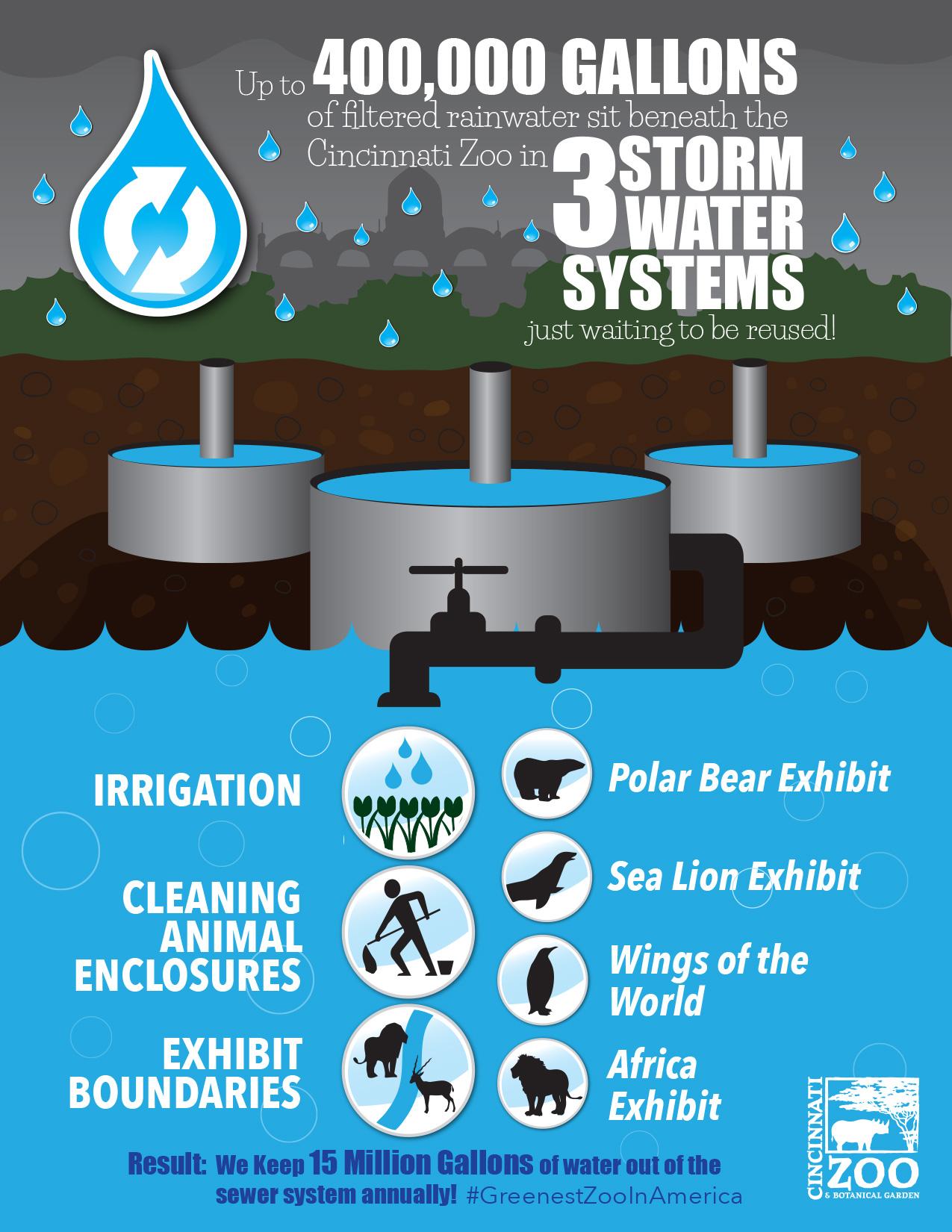The Cincinnati Zoo & Botanical Garden has saved enough water since 2006 to fulfill the needs of 10,000 households for a year. The effort is not only helping out the environment but saving the zoo and local taxpayers millions of dollars.
The zoo began its water conservation efforts by fixing leaks in exhibit pools, installing low-flow faucets and fixtures, upgrading filtration systems and changing everyday behaviors. Those changes brought the zoo’s annual water consumption down from 220 million gallons in 2005 to 52 million gallons last year, which contributed to an overall savings of 1 billion gallons of water.
“It was obvious that the zoo needed to take action when our annual water consumption reached a staggering 220 million gallons in 2005,” said Mark Fisher, Cincinnati Zoo’s vice president of facilities & sustainability. “As a responsible steward of the environment and a nonprofit business striving to spend dollars wisely, that number was unacceptable.”
The $5.5 million that the zoo saved as a result of its new behaviors have been reinvested in its infrastructure, and other water conservation efforts including pervious pavement that allows rainwater to seep through for collection, green space in formerly paved areas, green roofs and rain gardens have been installed.
The zoo now holds up to 400,000 gallons of filtered rainwater under its grounds in a specially designed system. That water is used to irrigate the botanical garden, clean animal enclosures, provide exhibit boundaries, and fill pools for polar bears, sea lions, penguins and other animals.
The largest storm water tanks were installed under the Africa exhibit when it was built two years ago, and all of the water used in that exhibit is 100 percent reused rainwater. The tanks were fully funded by the Metropolitan Sewer District and keep 15 million gallons of water out of the sewer system each year. Cincinnati’s combined sewer overflow is the oldest in the country, and heavy rains cause billions of gallons of raw sewage to surge into the Ohio River as a result of its age and capacity.
The zoo’s water diversion efforts have saved taxpayers money by reducing issues caused by flooding, erosion and pollution. Eventually, it plans to take 100 percent of its property off Cincinnati’s storm water grid.
Now, the zoo’s system is being touted as a model for other organizations across the country by the Environmental Protection Agency.
